Water and gas pipe: remote control and real dimensions
What is this parameter - remote control? How does it compare to actual pipe sizes? What is it introduced for and in what units can it be measured? What values can it take? In the article we will try to answer these questions.
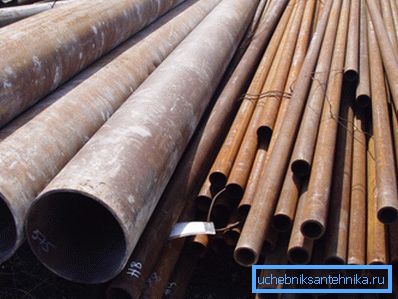
What it is
The remote control (nominal or nominal diameter, nominal passage) is a parameter characterizing the compatibility of pipes and fittings for them. For example, any pipe DN25 will be compatible with the angle or clutch of the same conditional passage.
Although the conditional passage is approximately equal to the inner diameter in millimeters, it is usually given without indicating any units. That is, the name of the pipe DU40 will be correct, but the DN 50 mm - no.
Note: an exact match between the conditional passage and the actual internal diameter is possible, but it is more a coincidence than a rule. Dimensions of pipe DN 65 or 100 are governed by the applicable GOST; however, one conditional passage corresponds to one outer diameter and several values of wall thickness, which, obviously, will give some variation in internal diameters.
A complete list of conditional passes is contained in GOST 28338-89. It provides a range of values from 2.5 to 4000. However, since we are primarily interested in plumbing pipelines, in the future we will limit ourselves to steel water and gas pipes manufactured according to GOST 3262-75; their maximum remote control is limited to 150.
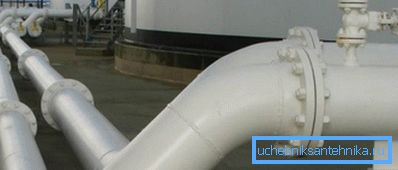
It is useful to know that the table of values of conditional passage is chosen in such a way that each subsequent size increases the pipeline capacity by 60 - 100%. She, as we remember from physics, is proportional to the cross-sectional area, which grows after the square of the diameter.
Inches and carvings
At the risk of confusing the reader even more, we have to mention one more fact concerning the sizes of pipelines. According to Russian standards, the unit of measurement for pipe diameter is millimeter.
In the case of DM, it is not specified, but implied; However, for water and gas pipes, along with some abstract conditional passage, an English inch is used. So, pipe DN20 is often referred to as 3/4 inch, and pipe DN32 as 1 1/4.
Reference: English inch is 2.54 cm.
In this simple conversion of inches into the metric measurement system will lead us to an unexpected discovery.
According to GOST 3262-75, the dimensions of the pipe DU15 should correspond to the following values:
- Outer diameter - 21.3.
- The wall thickness is 2.5, 2.8 or 3.2, depending on what type the product belongs to (it can be light, ordinary and reinforced). Accordingly, a simple calculation will give us an inner diameter of 16.3, 15.7 or 14.9 mm.
Meanwhile, 1/2 inch is 12.7 mm. So what does the name half-inch pipe mean? Only that on it it is possible to cut a pipe carving of the corresponding size.
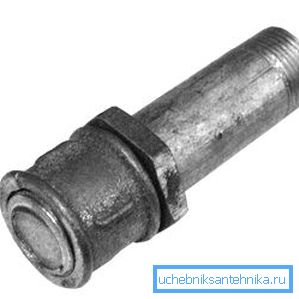
Let us give some values of the sizes often used in the installation of sanitary equipment pipe threads.
| Pipe thread size (inches) | Outer diameter (ridge, mm) | Internal diameter (at the troughs, mm) |
| 1/2 | 20,956 | 18,636 |
| 3/4 | 26,442 | 24,119 |
| one | 33,250 | 30,294 |
| 1 1/4 | 41,912 | 38,954 |
| 1 1/2 | 47,804 | 44,817 |
| 2 | 59,616 | 56,659 |
GOST 3262-75
Let's return, however, to water gas pipes. To find out what are the dimensions of the pipe DU20 or what is the outer diameter of the pipe DU50, it is sufficient to examine carefully the GOST 3262-75, according to which they are made.
Dimensions
| Conditional pass | Outside diameter | Pipe wall thickness | ||
| Lungs | Common | Amplified | ||
| 15 | 21.3 | 2.5 | 2.8 | 3.2 |
| 20 | 26,8 | 2.5 | 2.8 | 3.2 |
| 25 | 33.6 | 2.8 | 3.2 | 4.0 |
| 32 | 42.3 | 2.8 | 3.2 | 4.0 |
| 40 | 48.0 | 3.0 | 3.5 | 4.0 |
| 50 | 60.0 | 3.0 | 3.5 | 4.5 |
| 65 | 75.5 | 3.2 | 4.0 | 4.5 |
| 80 | 88.5 | 3.5 | 4.0 | 4.5 |
| 90 | 101.3 | 3.5 | 4.0 | 4.5 |
| 100 | 114.0 | 4.0 | 4.5 | 5.0 |
| 125 | 140.0 | 4.0 | 4.5 | 5.5 |
| 150 | 165.0 | 4.0 | 4.5 | 5.5 |
Here is a complete list of standard sizes described by the standard. To find out, for example, all sizes of pipe DU40, it is enough to find it in the table.
Note! The inner diameter is equal to the difference between the outer diameter and the double wall thickness. For lightweight DU40, it will be 48 - (3 x 2) = 42 mm.
Other requirements
The standard contains not only the range of products manufactured according to it.
It has a number of production requirements.
- All VGP pipes are electrowelded, that is, they are produced by rolling a flat billet and then welding a longitudinal seam.
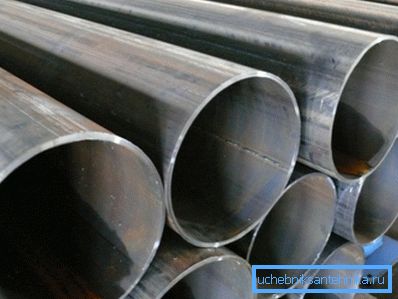
- Within the framework of the standard, they can be produced both without corrosion-resistant coating and galvanized.
Useful: the price of the latter is higher by about 50%.
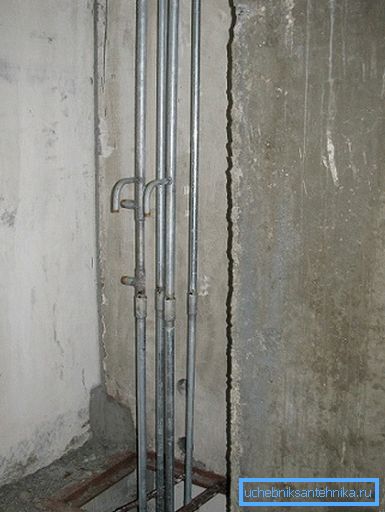
- The working hydraulic pressure should be at least 25 kgf / cm2 for light and ordinary products, and 32 kgf / cm2 for reinforced.
- The length of straight segments is from 4 to 12 meters.. According to GOST, they can be supplied unmeasured, dimensional and multiple dimensional lengths; in the latter case, an allowance of 5 mm is made for each cut.
Useful stuff
Finally, let us give ourselves some useful advice to the owner of a house or apartment who is going to install water supply or a heating system with his own hands.
- It makes sense to use black steel only on heating. And then, provided that the heating system is not reset for the summer: the combination of dampness and air access is contraindicated.
- Galvanized going exclusively on the threads. The instruction is related to the fact that the zinc coating burns out on the welded joints.
- For sealing threaded connections easier and cheaper to use flax with paint. Flax is cheap but rotting; paint completely solves this problem.

Conclusion
We hope that the material offered to the reader will help him orient himself in the standard sizes of steel pipes on the market. As always, additional information can be found in the video in this article. Successes!